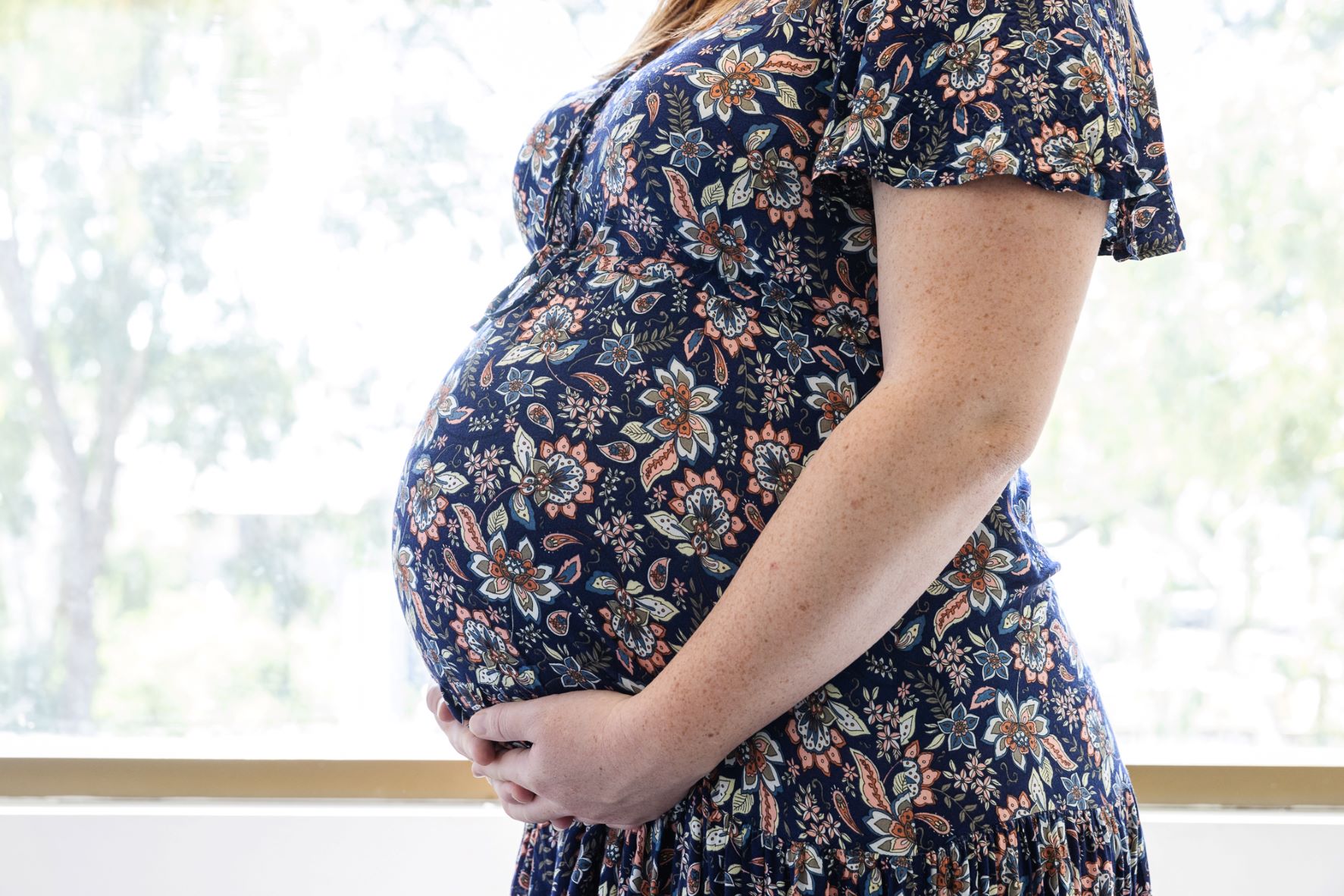Why are the First 1,000 Days of a Child’s life Important?
‘Early’ child development, the period from conception to a child’s second birthday - known as the first 1,000 days of life1 – are pivotal in setting an individual’s health trajectory2. The first 1,000 days is a time of maximum developmental brain plasticity, and therefore represents the period when there is the greatest potential to affect health and well-being over the life course3.
That is why it is critical to focus on the First 1000 Days of life
The Australian government recognises the importance of a preventive health strategy as the key to achieving a healthier Australia by 20304. Even though the majority of Australians have one of the longest life expectancies in the world due to successful and sustained prevention programs and a world-leading health system, more Australians are now living with and suffering from chronic illness than ever5.
Australian state6 and federal government initiatives7 have emphasised that supporting child physical and mental health should begin with reducing risk and challenges during critical developmental periods, and as early as possible from the start of life.
Research evidence strongly supports this approach – that investment in prevention and early intervention is fundamentally important in child development.
What is the evidence?
The developmental origins of health and disease8-10 proposes a link between conceptual, foetal and early infant phases of life and the long-term development of non-communicable diseases, such as cardiovascular disease, diabetes, cancer and behavioural disorders. The concept that early life exposures influence the long-term risk of disease is referred to as developmental programming11; in essence while we are born with certain genes, internal and external environments influence the cells to create either disease or wellness.

Environmental factors include maternal and paternal nutrition, smoking, infant feeding methods, maternal stress, lifestyle choices, exposure to environmental toxins and infections. For example, children of mothers with obesity are twice as likely to be obese at two years of age as compared with normal-weight mothers12. Prenatal maternal psychological distress – that is heightened and prolonged stress, anxiety and depression - has been associated with developmental problems in children including difficult temperament, poorer cognitive and language skills, and an increase in behavioural and emotional problems during childhood13. Persistent anxiety during pregnancy is associated with poorer outcomes for both mother and child, such as more medical visits, obstetric complications, shorter gestation, greater child emotional-behavioural problems and increased risk for postnatal depression14, 15. On the other hand, studies with pregnant women have found that prenatal positive mental health such as positive emotions and expressions, as well as optimism, are protective of postpartum depression16, and infant birth outcomes17.
What can we do to enhance child development?
The risk of disease at any stage of life is determined by the interaction of genetics and the cumulative exposures to lifestyle and environmental factors throughout life18. A life course perspective, looking at disease from conception and pregnancy, through to adulthood and aging, emphasises the importance of targeting prevention efforts as early as possible in life19. Shifting focus to well-being strategies, commencing in early life, will reduce risk factors as early as possible and enhance positive pathways for the child, while also supporting the mother and her partner.
Evidence shows that certain interventions and supports create protective factors that can buffer adverse child experiences and make a significant improvement to an individual’s lifelong health, development and quality of life20, 21. These interventions include:
- Access to comprehensive antenatal and postnatal care
- Regular child health and development check-ups from birth
- Breastfeeding support - breastfeeding is a protective factor that reduces infant mortality, protects against illnesses, and helps develop a baby’s microbiome22
- Support for women to complete their school education23
- The presence of at least one stable and committed relationship with a parent, caregiver or other adult24
- Early home learning experiences, such as story telling, influence child language and cognitive development
- Vaccine and immunisation programs25
- Oral and hearing health services
- Parenting programs and support groups
- Outdoor play and time in nature26
- Attending high quality early childhood education and care (ECEC) can help lay the foundations for future skills development, well-being and learning27
- sustained post-birth nurse home visiting for priority populations
- Specialised programs for Aboriginal people, refugees and CALD populations
When multiple protective factors and positive interventions are present, children - even those experiencing challenges and disadvantage - are better able to cope and achieve good health and well-being outcomes28.
Research evidence is clear – prevention and early intervention support strategies especially during the first 1,000 days - places children on a pathway to good health and well-being. This is our priority as a community and society.
Prepared by the ORIGINS team based at The Kids Research Institute Australia.
References
1. 1 D. Why 1,000 Days, https://thousanddays.org/why-1000-days/ (2019).
2. World Health O. Prevention of mental disorders : effective interventions and policy options : summary report / a report of the World Health Organization Dept. of Mental Health and Substance Abuse ; in collaboration with the Prevention Research Centre of the Universities of Nijmegen and Maastricht. Geneva: World Health Organization, 2004.
3. Moore T AN, Deery A and West S T,. The First Thousand Days: An Evidence Paper,. 2017. Melbourne: Murdoch Children’s Research Institute.
4. Department of Health. National Preventive Health Strategy 2021-2030. 2021. Commonwealth of Australia.
5. Australian Institute of Health & Welfare (AIHW). Australian Burden of Disease Study: impact and causes of illness and death in Australia 2015. . In: Welfare AIoHa, (ed.). Canberra2019.
6. New South Wales Government. NSW Government initiatives to support child development, https://www.nsw.gov.au/family-and-relationships/child-development/initiatives-to-support-child-development (2023, accessed 28/05/2023 2023).
7. Australian Government National Mental Health Commission. National Children’s Mental Health and Wellbeing Strategy, https://www.mentalhealthcommission.gov.au/projects/childrens-strategy (2023, accessed 28/05/2023 2023).
8. Barker D. 1998. In utero programming of chronic disease. . Clin Sci 1998: 115-128.
9. Barker DJ. The fetal and infant origins of adult disease. BMJ 1990; 301.
10. Dubos RJ. Man adapting. New Haven: Yale University Press, 1965.
11. Moskalev A, Aliper A, Smit-McBride Z, et al. Genetics and epigenetics of aging and longevity. Cell Cycle 2014; 13: 1063-1077.
12. Whitaker RC. Predicting preschooler obesity at birth: the role of maternal obesity in early pregnancy. Pediatrics 2004; 114: e29-e36.
13. Fernandes M, Srinivasan K, Menezes G, et al. Prenatal depression, fetal neurobehavior, and infant temperament: Novel insights on early neurodevelopment from a socioeconomically disadvantaged Indian cohort. 2018. DOI: 10.17863/CAM.30440.
14. Glover V. Maternal depression, anxiety and stress during pregnancy and child outcome; what needs to be done. Best Practice & Research Clinical Obstetrics & Gynaecology 2014; 28: 25-35. DOI: 10.1016/j.bpobgyn.2013.08.017.
15. B.R. Van den Bergh EJM, M. Mennes, et al.,. Antenatal maternal anxiety and stress and the neurobehavioural development of the fetus and child: links and possible mechanisms. A review. Neurosci Biobehav Rev 2005; 29: 237-258.
16. Voellmin A, Entringer S, Moog N, et al. Maternal positive affect over the course of pregnancy is associated with the length of gestation and reduced risk of preterm delivery. Journal of Psychosomatic Research 2013; 75: 336-340. DOI: 10.1016/j.jpsychores.2013.06.031.
17. Brugha TS MC, Slade P, Walters SJ.,. Universal prevention of depression in women postnatally: cluster randomized trial evidence in primary care. . Psychol Med 2011; 41: 739-748.
18. Lacagnina S. The Developmental Origins of Health and Disease (DOHaD). Am J Lifestyle Med 2020; 14: 47-50. 20191011. DOI: 10.1177/1559827619879694.
19. D’Arcy C and Meng X. Prevention of common mental disorders: conceptual framework and effective interventions. Curr Opin Psychiatry 2014; 27: 294-301. DOI: 10.1097/YCO.0000000000000076.
20. Parkinson S, Gunawan A, Lewig K, et al. Improving service responses to vulnerable families during pregnancy and infancy. A report to the Australian Government Department of Social Services. Australian Centre for Child Protection/University of South Australia 2017.
21. New South Wales Government Ministry of Health. The First 2000 Days Framework. 2019. Sydney.
22. Health AIo and Welfare. Breastfeeding. 2023. Canberra: AIHW.
23. Ware H. Effects of maternal education, women's roles, and child care on child mortality. Population and development review 1984; 10: 191-214.
24. Center on the Developing Child. 3 Principles to Improve Outcomes for Children and Families. 2021. Harvard University.
25. World Health Organisation (WHO). Vaccines and Immmunization, https://www.who.int/health-topics/vaccines-and-immunization#tab=tab_1 (2024).
26. Bilton H. Outdoor learning in the early years: Management and innovation. Routledge, 2010.
27. OECD. Starting Strong 2017. 2017.
28. National Scientific Council on the Developing Child. Place Matters: The Environment We Create Shapes the Foundations of Healthy Development https://developingchild.harvard.edu/ (2023).

